A1C level 6.0. Understanding A1C Levels: What Does an A1C of 6.0 Mean for Your Health
What is an A1C level of 6.0. How does it relate to prediabetes. What factors can influence A1C levels. What steps can you take to lower your A1C. When are medications considered for managing A1C levels.
What is A1C and Why is it Important?
A1C, also known as hemoglobin A1C or HbA1c, is a crucial blood test that provides valuable information about a person’s average blood sugar levels over the past 2-3 months. This test is widely used to diagnose and monitor diabetes and prediabetes. But what exactly does an A1C level of 6.0 mean for your health?
An A1C level of 6.0 indicates that 6% of the hemoglobin in your blood is saturated with sugar. This level falls within the prediabetes range, which spans from 5.7% to 6.4%. While not yet considered diabetic, an A1C of 6.0 is a clear sign that your blood sugar levels have been consistently elevated over the past few months.
Interpreting A1C Results
- Normal: Below 5.7%
- Prediabetes: 5.7% to 6.4%
- Diabetes: 6.5% or higher
Understanding your A1C level is crucial for assessing your risk of developing type 2 diabetes. The higher your A1C, the greater your risk. However, it’s important to note that an A1C of 6.0 doesn’t necessarily mean you’ll develop diabetes. With proper lifestyle changes and medical guidance, it’s possible to lower your A1C and reduce your risk.

Symptoms Associated with an A1C of 6.0
Typically, an A1C level of 6.0 doesn’t produce noticeable symptoms. This is one reason why regular screening is important, especially for those at higher risk of developing diabetes. However, there are some subtle signs that may indicate prediabetes:
- Darkening of the skin (acanthosis nigricans) in certain areas like the neck, armpits, elbows, knuckles, and knees
- Skin tags
It’s crucial to be aware of the symptoms of diabetes, as they may develop if prediabetes progresses. These include:
- Increased thirst
- Frequent urination
- Excessive hunger
- Unintentional weight loss
- Fatigue
- Blurred vision
Factors Influencing A1C Levels
Several factors can contribute to an elevated A1C level of 6.0. Understanding these can help you take appropriate steps to manage your blood sugar levels:
Lifestyle Factors
- Diet high in refined carbohydrates and added sugars
- Lack of physical activity
- Overweight or obesity
- Chronic stress
- Inadequate sleep
Genetic and Demographic Factors
- Age (risk increases with age)
- Race (higher risk for Black, Hispanic/Latino, American Indian, Asian American, and Pacific Islander populations)
- Family history of prediabetes or diabetes
Medical Factors
- Use of certain medications (e.g., glucocorticoids)
- Pregnancy
- Chronic diseases or inflammation
It’s important to note that some factors can falsely affect A1C results. These include kidney failure, liver disease, severe anemia, certain medications, blood loss or transfusions, pregnancy, and certain hemoglobin variants. If any of these apply to you, it’s crucial to discuss them with your healthcare provider to ensure accurate interpretation of your A1C results.

Strategies to Lower Your A1C Level
If your A1C is 6.0, taking action to lower it can help prevent or delay the onset of diabetes. Here are some effective strategies:
Dietary Changes
- Increase non-starchy vegetable intake
- Choose lean proteins and plant-based fats
- Limit refined carbohydrates and added sugars
- Opt for whole-grain carbohydrates (e.g., whole wheat bread, quinoa, farro, steel-cut oats)
Physical Activity
How much exercise is recommended to help lower A1C levels? The American Diabetes Association suggests aiming for 150 minutes of moderate-intensity physical activity per week. This can be broken down into 30-minute sessions five days a week. Regular exercise helps improve insulin sensitivity and glucose uptake by your cells, effectively lowering blood sugar levels.
Weight Management
For those who are overweight or obese, losing excess weight can significantly improve A1C levels. Even a modest weight loss of 5-10% of your body weight can have substantial benefits for blood sugar control.

Stress Management and Sleep
Chronic stress and poor sleep can negatively impact blood sugar levels by affecting hormone balance. Implementing stress-reduction techniques such as meditation, yoga, or deep breathing exercises, and prioritizing good sleep hygiene can help stabilize blood sugar levels.
The Role of Medications in Managing A1C Levels
Are medications necessary for an A1C level of 6.0? Generally, medications are not prescribed for an A1C of 6.0, which falls within the prediabetes range. The primary approach for managing prediabetes typically involves lifestyle modifications.
However, in some cases, healthcare providers might consider prescribing metformin, a medication recommended by the American Diabetes Association and the Endocrine Society for prediabetes treatment. The decision to use medication is based on individual factors and should be discussed with a healthcare provider.
Why Medications Are Not Typically Prescribed for Prediabetes
- People with prediabetes are not at immediate risk for serious microvascular complications associated with diabetes, such as blindness or neuropathy.
- Approximately two-thirds of individuals with prediabetes do not progress to diabetes.
- About one-third of people with prediabetes can lower their A1C to normal levels through lifestyle changes alone.
Given these factors, the emphasis is placed on diet and lifestyle modifications as the primary intervention for managing prediabetes and lowering A1C levels.
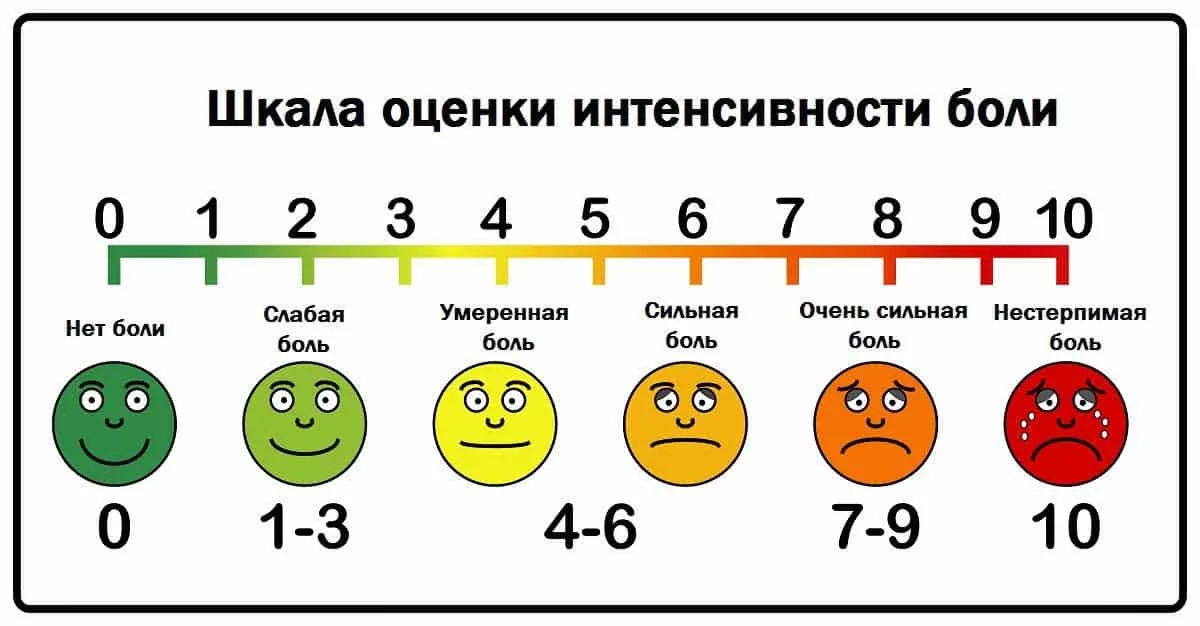
The Predictive Power of A1C for Diabetes Risk
Can A1C levels accurately predict diabetes risk? While A1C is a valuable tool for assessing average blood sugar levels, its predictive power for diabetes risk is still a subject of ongoing research and debate.
The U.S. Preventive Services Task Force (USPSTF) recommends diabetes screening every three years for patients with hypertension, as they have an increased risk of developing diabetes. However, there’s no consensus on the effectiveness of early intervention compared to intervention at symptom onset.
Some evidence suggests that A1C testing may be more sensitive than fasting blood glucose levels for identifying diabetes risk. Additionally, A1C levels can help define treatment goals and assess the risk of complications.
Advantages of A1C Testing
- Provides a longer-term view of blood sugar control (2-3 months)
- Does not require fasting
- Less day-to-day variability compared to blood glucose tests
- Can be used to set treatment goals and monitor progress
Limitations of A1C Testing
- May be affected by certain medical conditions or genetic factors
- Does not provide information about daily blood sugar fluctuations
- May not be as accurate in certain populations (e.g., pregnant women, people with certain hemoglobin variants)
While A1C testing is a valuable tool, it’s important to consider it alongside other risk factors and diagnostic tests for a comprehensive assessment of diabetes risk.

Monitoring and Follow-up for A1C Levels
How often should A1C levels be checked if you have prediabetes? For individuals with an A1C of 6.0, which falls within the prediabetes range, regular monitoring is crucial. The American Diabetes Association recommends testing A1C at least once a year in people with prediabetes, but your healthcare provider may recommend more frequent testing based on your individual risk factors and health status.
Follow-up Steps for an A1C of 6.0
- Consult with a healthcare provider to discuss your results and develop a management plan.
- Implement lifestyle changes as recommended by your healthcare team.
- Schedule regular follow-up appointments to monitor your progress.
- Consider working with a registered dietitian or certified diabetes educator for personalized guidance.
- Keep track of your A1C levels over time to assess the effectiveness of your interventions.
Remember, an A1C of 6.0 is a warning sign, not a diagnosis of diabetes. With proper management and lifestyle changes, it’s possible to lower your A1C and reduce your risk of developing type 2 diabetes.

The Impact of A1C Levels on Long-term Health
Understanding the long-term health implications of elevated A1C levels is crucial for motivation and informed decision-making. While an A1C of 6.0 falls within the prediabetes range, it’s important to recognize that consistent elevation of blood sugar levels, even if not in the diabetic range, can have significant health impacts over time.
Potential Long-term Consequences of Elevated A1C
- Increased risk of developing type 2 diabetes
- Higher risk of cardiovascular disease
- Potential for early stages of kidney damage
- Increased risk of cognitive decline and dementia
- Higher likelihood of developing neuropathy (nerve damage)
- Greater risk of vision problems, including diabetic retinopathy
It’s important to note that these risks increase gradually as A1C levels rise. An A1C of 6.0 represents an opportunity to intervene early and potentially prevent or delay the onset of these complications.
The Benefits of Lowering A1C
Research has shown that even small reductions in A1C can have significant health benefits. For example, a study published in the New England Journal of Medicine found that for every percentage point decrease in A1C, there was a 35% reduction in the risk of microvascular complications (such as kidney disease, eye problems, and nerve damage).
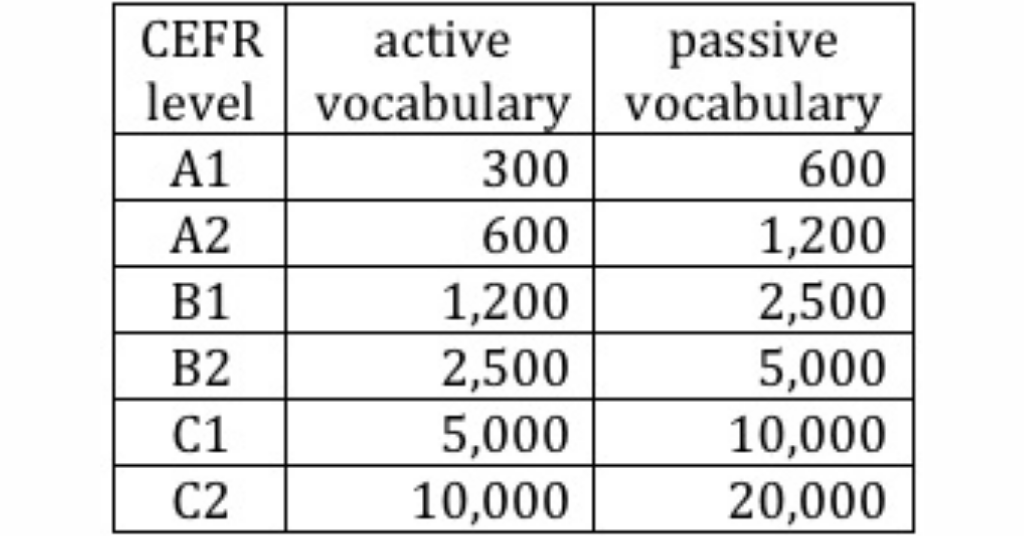
By taking steps to lower your A1C from 6.0 to the normal range (below 5.7%), you can significantly reduce your risk of developing diabetes and its associated complications. This underscores the importance of early intervention and consistent management of blood sugar levels.
Emerging Research and Future Directions in A1C Management
The field of diabetes prevention and management is continuously evolving, with new research shedding light on more effective ways to interpret and manage A1C levels. Here are some areas of ongoing research and potential future developments:
Personalized A1C Targets
Researchers are investigating whether A1C targets should be more personalized based on individual factors such as age, duration of diabetes (if applicable), presence of complications, and overall health status. This approach could lead to more tailored and effective management strategies for people with elevated A1C levels.
Alternative Biomarkers
While A1C is currently the gold standard for assessing long-term blood sugar control, scientists are exploring other biomarkers that might provide additional or complementary information. For example, glycated albumin and fructosamine are being studied as potential alternatives or supplements to A1C testing, especially in situations where A1C may be less reliable (such as in people with certain hemoglobin variants).

Technological Advancements
Continuous glucose monitoring (CGM) technology is becoming more advanced and accessible. Future developments may allow for more precise correlations between real-time glucose data and A1C levels, providing a more comprehensive picture of an individual’s glucose control.
Gut Microbiome Research
Emerging research is exploring the relationship between the gut microbiome and glucose metabolism. Future interventions for managing A1C levels might include strategies to optimize gut health through dietary changes, probiotics, or other interventions.
Epigenetic Factors
Scientists are investigating how epigenetic factors (changes in gene expression that don’t involve changes to the underlying DNA sequence) might influence A1C levels and diabetes risk. This research could lead to new approaches for predicting and managing diabetes risk.
As research in these areas progresses, our understanding of A1C and its implications for health will continue to evolve. This ongoing research holds the promise of more precise, personalized, and effective strategies for managing blood sugar levels and reducing the risk of diabetes and its complications.

In conclusion, an A1C level of 6.0 serves as an important early warning sign, indicating prediabetes and an increased risk of developing type 2 diabetes. However, it also represents an opportunity for intervention. By understanding the factors that influence A1C levels and taking proactive steps to lower them through lifestyle changes, individuals can significantly reduce their risk of progressing to diabetes and developing associated complications. Regular monitoring, in conjunction with healthcare provider guidance, can help track progress and ensure that interventions are effective. As research in this field continues to advance, we can look forward to even more sophisticated and personalized approaches to managing A1C levels and promoting long-term health.
HbA1c: 6
Elle Penner, MPH, RD
5 mins
What does an A1c level of 6 mean? Are there any symptoms associated with this level?
An A1c level of 6 means that 6% of the hemoglobin in your blood is saturated with sugar.
An A1c of 6 is considered elevated and means your blood sugar levels have been raised over the last few months.
Elevated A1c levels of 5.7-6.4 percent are considered prediabetes. The higher your A1c, the greater your risk for developing diabetes.
If your A1c is elevated, diet and lifestyle changes may be effective for getting your levels back into the optimal range without the need for medications. Lowering your A1c back into the optimal range (4-5.6%) can prevent or delay diabetes in the future.
An A1c of 6 doesn’t usually have any symptoms. One possible sign of prediabetes is a darkening of the skin and sometimes skin tags on certain parts of the body including the neck, armpits, elbows, knuckles, and knees.
It’s important to know the symptoms of diabetes. These include increased thirst, frequent urination, excess hunger, unintentional weight loss, fatigue, and/or blurred vision.
These include increased thirst, frequent urination, excess hunger, unintentional weight loss, fatigue, and/or blurred vision.
Factors that could contribute to an A1c level of 6:
A variety of factors can affect A1c levels. Some of these include:
Diet, particularly those high in refined carbohydrates and added sugars, and low in fiber
Overweight/ obesity
Being physically inactive/ sedentary
Age
Race (people of Black, Hispanic/Latino, American Indian, Asian American, or Pacific Islander descent are at greater risk for prediabetes/ diabetes.)
Stress
Use of certain medications, including glucocorticoids
Genetics (family history of pre-diabetes or diabetes)
Adherence to your prediabetes/ diabetes management plan
Pregnancy
Chronic disease/ inflammation
Several things can also falsely increase or decrease your A1c result. Some of these include:
Some of these include:
Kidney failure, liver disease, or severe anemia
Certain medicines, including opioids and some HIV medications
Blood loss or blood transfusions
Early or late pregnancy
A less common type of hemoglobin found in people of African, Mediterranean, or Southeast Asian descent, as well as people with blood disorders like sickle cell anemia or thalassemia
Let your doctor know if any of these apply to you to determine if you need follow-up testing.
What to do if your A1c level is 6?
Adopting healthier habits and making changes to your diet can help lower your A1c levels back into the optimal range, and potentially prevent or delay a progression to diabetes. To lower your A1c:
Be active every day: Aim for 150 minutes of moderate physical activity per week (about 30 minutes 5 days per week).
Fill half of your plate with non-starchy veggies at every meal, and incorporate a source of lean protein and plant-based fat to assist with blood sugar control.

Limit refined carbohydrates and added sugar, and choose whole-grain carbohydrates such as whole wheat bread/ pasta, quinoa, farro, and steel-cut oats, instead.
Lose excess weight if you are overweight or obese
Manage stress and get adequate sleep to help balance hormone levels that can impact blood sugar
Medications used to improve A1c results
Although a medication called metformin is recommended by the American Diabetes Association and the Endocrine Society for the treatment of prediabetes, medications are typically not prescribed for an A1c level of 6.
This is likely because individuals with prediabetes are not at risk for developing the more serious microvascular complications of diabetes, like blindness and neuropathy. Also, roughly two-thirds of people with prediabetes never progress to develop diabetes. Additionally, about one-third of people with prediabetes are able to lower their A1c back into the optimal range without medication [5].
For this reason, diet and lifestyle changes are typically recommended in lieu of medications for the management of prediabetes.
Can Hemoglobin A1C Levels Predict Diabetes Risk?
CAROLINE WELLBERY, M.D.
Am Fam Physician. 2005;72(7):1369
The U.S. Preventive Services Task Force (USPSTF) recommends diabetes screening every three years for patients with hypertension because they have an increased risk of developing diabetes. Experts do not agree on the usefulness of screening because no study has found early intervention to be more effective than intervention when symptoms appear. The role of hemoglobin A1C screening is unclear, but some evidence suggests that the use of A1C levels is more sensitive than fasting blood glucose levels. In addition, A1C levels can define treatment goals and risk of complications in patients with established disease. Edelman and colleagues examined whether A1C levels could predict new-onset diabetes in an outpatient population.
The role of hemoglobin A1C screening is unclear, but some evidence suggests that the use of A1C levels is more sensitive than fasting blood glucose levels. In addition, A1C levels can define treatment goals and risk of complications in patients with established disease. Edelman and colleagues examined whether A1C levels could predict new-onset diabetes in an outpatient population.
Patients 45 to 64 years of age without hypertension or diabetes were enrolled in the study. A1C levels were measured at baseline, and patients were interviewed annually for two years and were rescreened at year 3 to determine whether they had developed diabetes (defined by self-report, an A1C level of 7 percent or higher, or a fasting blood glucose level of 126 mg per dL [7 mmol per L] or higher).
Of the 957 patients who completed the follow-up screening, 73 developed diabetes. None of these patients had a baseline A1C level of 4.5 percent or lower. Diabetes incidence steadily increased with increasing baseline A1C level. The annual incidence rate was 0.8 percent for patients with normal A1C levels (5.5 percent or lower), 2.5 percent for patients with high-normal levels (5.6 to 6.0 percent), and 7.8 percent for patients with elevated levels (6.1 to 6.9 percent). After considering other possible associated characteristics, the authors found that only baseline body mass index was additionally associated with increased diabetes risk, with obese patients at the highest risk.
The annual incidence rate was 0.8 percent for patients with normal A1C levels (5.5 percent or lower), 2.5 percent for patients with high-normal levels (5.6 to 6.0 percent), and 7.8 percent for patients with elevated levels (6.1 to 6.9 percent). After considering other possible associated characteristics, the authors found that only baseline body mass index was additionally associated with increased diabetes risk, with obese patients at the highest risk.
The authors conclude that A1C levels can identify patients at high risk for diabetes. Obese patients are particularly at risk. The authors suggest that physicians screen their patients, paying special attention to those with risk factors such as hypertension, obesity, and a family history of diabetes. Identifying patients with A1C levels from 6.1 to 6.9 percent might be beneficial in terms of lifestyle counseling or pharmacotherapy to delay onset of diabetes. This study did not address whether A1C levels could identify more at-risk patients and offer better prevention than identification based on other risk factors such as obesity. The effectiveness and cost-effectiveness of screening also are not known.
The effectiveness and cost-effectiveness of screening also are not known.
editors note: The U.S. Preventive Services Task Force1 gives a B recommendation to screening high-risk patients (i.e., those with hypertension or hyperlipidemia) for diabetes but states that there is insufficient evidence to recommend universal screening. No randomized controlled trials have compared outcomes based on diabetes screening with outcomes based on symptom detection. Contrary to this article, hemoglobin A1C testing is described as relatively insensitive to lower-level elevations of fasting blood glucose: 87 percent of patients with glucose intolerance determined by fasting blood glucose levels also have a normal A1C level (i.e., less than 6.1 percent).—c.w.
REFERENCE1U.S. Preventive Services Task Force. Guide to clinical preventive services. 3d ed. Washington, D.C.: Agency for Healthcare Research and Quality, 2003.
Glycated hemoglobin – laboratory article DNAOM
Views:
7675
Published:
/
Updated:
- Diabetes
- Obesity
- Stress
General
Glycated hemoglobin is a compound of glucose and hemoglobin found in red blood cells, a marker of diabetes mellitus. The concentration of glycated hemoglobin depends on the average blood glucose over a period of 6-12 weeks.
The concentration of glycated hemoglobin depends on the average blood glucose over a period of 6-12 weeks.
For diagnosing diabetes, an analysis to determine the level of glycated hemoglobin in the blood is indispensable. Since the sensitivity of the method allows you to most accurately establish and control the level of diabetes. When monitoring the condition of patients with this diagnosis, it is recommended to conduct this study at least once every 3 months.
Hemoglobin is a protein found in red blood cells (erythrocytes) that is capable of carrying oxygen to internal organs. In the body, it is presented in the form of several fractions; in addition, a significant number of states and forms of this protein have been identified. One of these fractions is hemoglobin A, the most common form (up to 98% of total hemoglobin). Hemoglobin A1c is part of hemoglobin A. When glucose enters the blood with food consumed, part of it, passing through the erythrocyte membrane, binds to hemoglobin A1c, during this interaction glycated hemoglobin is formed (the part of hemoglobin that combines with glucose is converted into hemoglobin HbA1c due to the glycation reaction).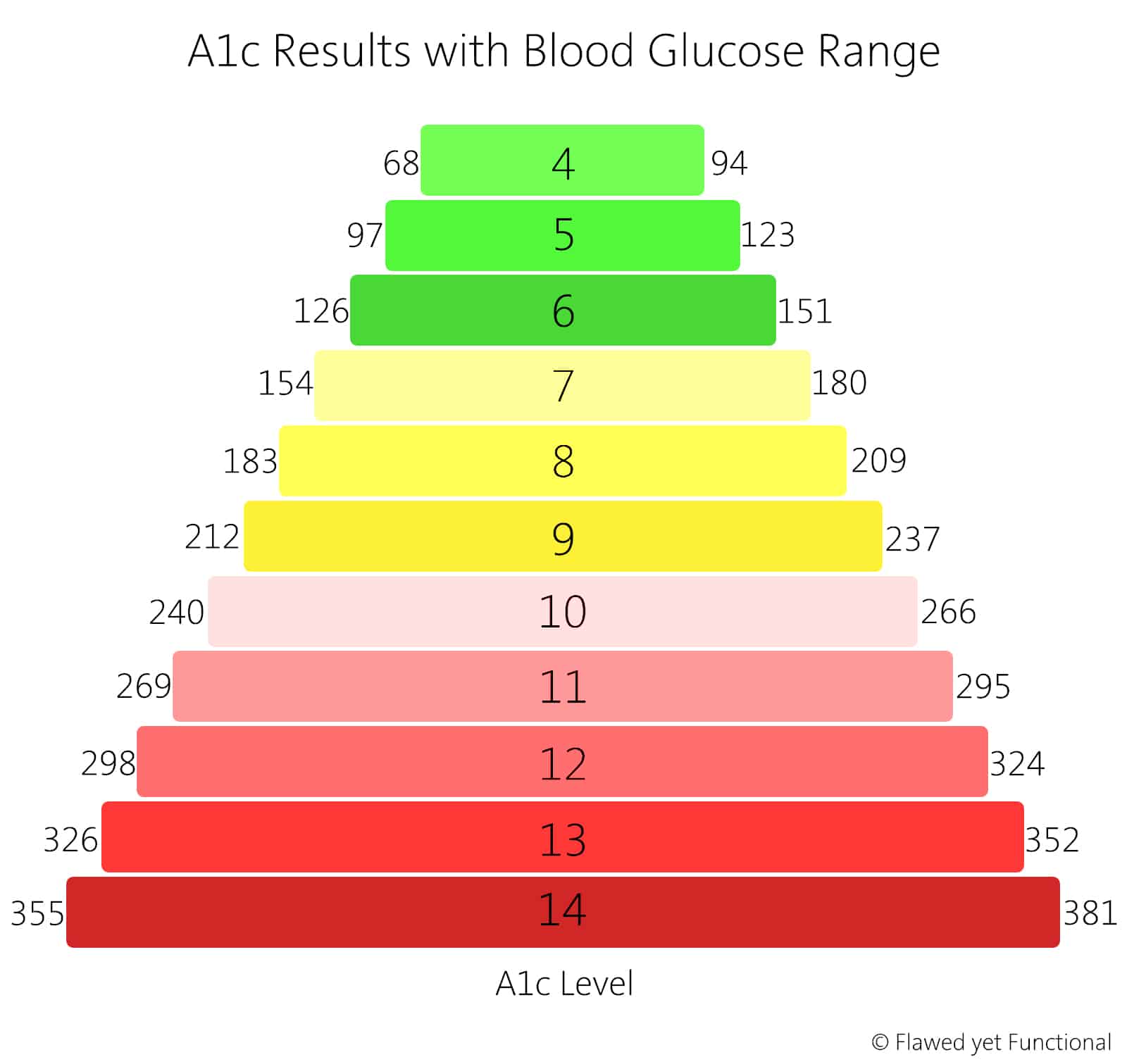 The level of the resulting compound is directly dependent on the concentration of glucose in the blood. This compound is quite stable and persists for 120 days until the destruction of the erythrocyte. The process of glycation and the formation of hemoglobin HbA1c is continuous and daily, since there is a constant renewal of red blood cells.
The level of the resulting compound is directly dependent on the concentration of glucose in the blood. This compound is quite stable and persists for 120 days until the destruction of the erythrocyte. The process of glycation and the formation of hemoglobin HbA1c is continuous and daily, since there is a constant renewal of red blood cells.
This clinical examination is indicated for patients with suspected or confirmed diabetes mellitus. Depending on the type of diabetes, the examination is prescribed from 2 to 4 times a year. the results of the analysis of the level of glycated hemoglobin may reflect the effectiveness of treatment. If the ongoing therapy does not give a successful result, then this allows the attending physician to quickly change tactics. Glycated hemoglobin is one of the most important indicators for patients with diabetes mellitus. At the stage of diagnosing this disease, this test is prescribed to detect uncontrolled jumps in glucose and helps in choosing the right therapy. In addition, a test for the level of glycated hemoglobin is included in a number of preventive examinations to detect the disease at an early stage, but additional examinations are required for a more accurate diagnosis. The determination of glycated hemoglobin is carried out if the patient is suspected of having diabetes and there are pronounced symptoms of high glucose:
In addition, a test for the level of glycated hemoglobin is included in a number of preventive examinations to detect the disease at an early stage, but additional examinations are required for a more accurate diagnosis. The determination of glycated hemoglobin is carried out if the patient is suspected of having diabetes and there are pronounced symptoms of high glucose:
- Great thirst, dry mouth;
- Increased fatigue;
- Frequent urination;
- A sharp decrease in vision;
- Weakened immunity and high susceptibility to infections.
Study preparation
It is recommended to donate blood in the morning, between 8 a.m. and 12 p.m. Blood is taken on an empty stomach, after 6-8 hours of fasting. Drinking water without gas and sugar is allowed. On the eve of the examination, food overload should be avoided.
Test indications
This examination is prescribed by the attending physician:
- To control blood glucose levels in diabetic patients in order to avoid severe complications on the kidneys, eyes, cardiovascular and nervous system.

- If diabetes mellitus is suspected and associated symptoms are present.
- For correction of the current therapy.
- For monitoring uncontrolled spikes in blood glucose for early diagnosis.
- For the purpose of prevention, for diagnosing a disease in the early stages of development.
Interpretation of results
There are several levels of reference values:
Normally, the level of glycated hemoglobin should not exceed 4.00-6.20%. In this case, there is no diabetes. A level above 6.5% indicates that the concentration of glucose in the blood is critical, and we can talk about the diagnosis of “diabetes mellitus” (in combination with other examinations). A condition characterized by a glycated hemoglobin level of 5.7-6.4% can be called prediabetes. This means that the level of glucose tolerance is impaired and there is a risk of diabetes.
Low levels of glycated hemoglobin may indicate an abnormal structure of red blood cells, anemia.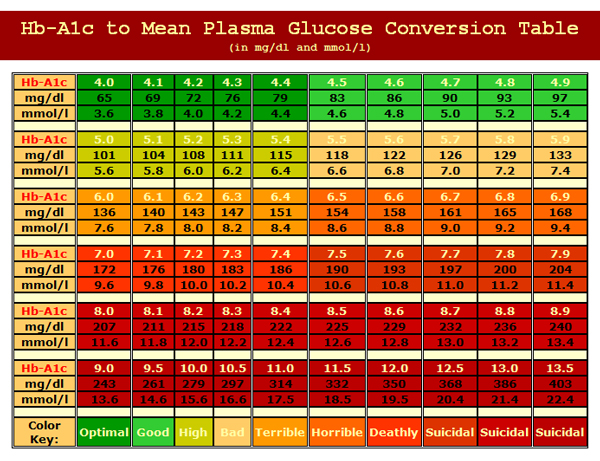 Also, after heavy bleeding, this test can give false negative results.
Also, after heavy bleeding, this test can give false negative results.
The glycated hemoglobin level reflects the average glucose level over 3 months, not at a specific point in time. Therefore, it is possible to influence its level downward only by reviewing your diet. Proper nutrition will help reduce weight and improve metabolism, which also has a positive effect on the level of glycated hemoglobin.
The diet should consist mostly of vegetables, fruits, lean fish, nuts, legumes. Reduce consumption of fatty and fried foods.
Increase daily activity, sports, walks. This will help optimize the weight.
Maintain emotional calm. Stress negatively affects metabolism. In the fight against negative emotions, breathing exercises and meditation will help.
Get tested for 14.115 Glycated hemoglobin.
References
- https://www.diacheck.ru/blogs/stati-sm-diachek/chto-takoe-glikirovanij-gemoglobin
- https://russjcardiol.elpub.
 ru/jour/article/viewFile/3839/2865
ru/jour/article/viewFile/3839/2865
Author:
Latynina Yuliya Sergeevna
Specialization:
biologist of clinical laboratory diagnostics
- Diabetes
- Obesity
- Stress
share:
Recommended tests
14.115
Glycated hemoglobin
can be taken at home
785 ₽
1 day
?
*The specified period does not include the day of taking the biomaterial
* Taking biomaterial is paid separately:
200 rub
Similar articles
Author:
Latynina Yulia Sergeevna
C-REACTIVE PROTEIN
- Stress
- The cardiovascular system
- Immunity
- infections
- Inflammation
Author:
Baktyshev Alexey Ilyich
Check-up “Diabetes”
- Diabetes
- Obesity
- Prevention
How to prevent diabetes?
- Obesity
- Diabetes
Intermittent fasting – I improve my health drastically
Hello, dear colleagues.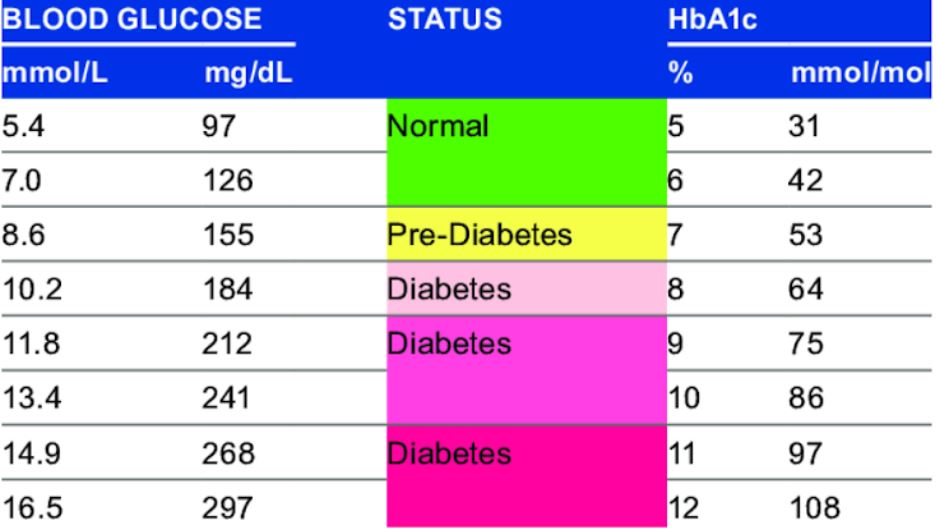 Today we invite you to read a new article from a series of publications for patients with diabetes.
Today we invite you to read a new article from a series of publications for patients with diabetes.
In recent years, a diet called intermittent fasting has been gaining popularity in many countries. Numerous rave reviews of “interval workers” lure us to get rid of extra pounds and improve our health without any difficulty … But is it really so? And will there be any benefit from intermittent fasting in diabetes mellitus (DM)? Let’s try to figure it out.
From Hippocrates to the Japanese…
The topic of metered fasting as an alternative treatment method is not new. Even in ancient times, Avicenna and Hippocrates suggested that their patients try “the cheapest medicine” – fasting, as a cure for certain diseases. In the USSR, the problem of therapeutic starvation was dealt with by such prominent scientists as academicians P.K. Anokhin, L.N. Bakulev and others. Doctor of Medical Sciences, Professor Yu. S. Nikolaev made, perhaps, the most significant contribution to the scientific substantiation of the treatment of a number of mental diseases (for example, schizophrenia) by the method of unloading and dietary therapy.
In the 21st century, the topic of intermittent fasting again came to the fore in 2016 after the recognition of the merits of the Japanese scientist, molecular biologist Yoshinori Ohsumi by the world scientific community. Dr. Osumi, a professor at the Tokyo Institute of Technology, received the Nobel Prize in Physiology or Medicine for his research into the little-understood mechanisms of autophagy, the regeneration processes that occur at the cellular level. In particular, Osumi discovered the genes that control this process; he was able to describe how the body adapts to starvation, as well as the response of cells to the penetration of pathogens into the body. During autophagy, cells destroy and recycle damaged organelles, in other words, they renew themselves. It has been proven that failure of this regenerative process can lead to a number of diseases such as Alzheimer’s disease, Parkinson’s disease, some forms of dementia and cancer. It has also been argued that it is possible to trigger autophagy in cells by adhering to various intermittent fasting patterns 1 .
How to eat during intermittent fasting?
Intermittent fasting is a diet in which long periods of fasting alternate evenly with short periods of eating. Unlike most diets, which focus on allowed and prohibited foods, with intermittent fasting, the question “What time should I eat?” comes to the fore.
There are three main approaches to intermittent fasting:
- Daily fasting – for several hours a day, a person does not eat or drink foods and drinks that contain calories. The fasting period usually lasts from 16 to 18 hours. The remaining 6-8 hours a day is allowed.
- 5 : 2 fasting – a person eats without restrictions 5 days a week, and for the remaining two days either eats once a day or limits daily energy intake to 500-800 calories.
- Complete (daily) fasting – abstinence from food for one to three days. This type of fasting can be dangerous and is therefore not recommended for general use 2 .
How does intermittent fasting work?
As a result of intermittent fasting, the amount of adipose tissue, which is capable of synthesizing factors that cause inflammation, decreases. Accordingly, reducing the release of these substances reduces the level of inflammation in the body. In addition, intermittent fasting is a way to reduce cellular damage and hyperglycemia (i.e. high blood sugar levels). Excessive activity of a gene that leads to cell death was noted in patients with diabetes mellitus. If long breaks between meals are observed, the activation of this gene decreases.
Accordingly, reducing the release of these substances reduces the level of inflammation in the body. In addition, intermittent fasting is a way to reduce cellular damage and hyperglycemia (i.e. high blood sugar levels). Excessive activity of a gene that leads to cell death was noted in patients with diabetes mellitus. If long breaks between meals are observed, the activation of this gene decreases.
Another element that affects metabolism and is associated with intermittent fasting is the release of growth hormone (somatotropin). Its secretion has a pronounced daily rhythm, most of all growth hormone is produced at night. Also, its release is stimulated by hypoglycemia (a decrease in blood sugar levels), which occurs against the background of starvation (one of the reasons for the release of the hormone at night, when food is not supplied) or physical activity. Fasting raises the level of the hormone at times. An increase in the level of somatotropin leads to an increase in its effects: protein synthesis, cell division and tissue renewal. Growth hormone has an effect that is the opposite of insulin, the blood glucose level rises, and the organs receive energy due to the breakdown of adipose tissue 3 .
Growth hormone has an effect that is the opposite of insulin, the blood glucose level rises, and the organs receive energy due to the breakdown of adipose tissue 3 .
Is intermittent fasting effective for diabetics?
The benefits of intermittent fasting in T2DM have been proven in a number of foreign studies. Thus, in 5 studies that involved only people with type 2 diabetes, daily fasting of at least 16 hours (main group) was compared with a regular calorie-restricted diet (control group). As a result, participants in the intermittent fasting group had significantly lower fasting glucose levels than those in the control group (-0.78 mmol/L vs. -0.47 mmol/L). Hypersensitivity to glucose and insulin, as well as decreased glucagon levels, were also significantly higher in the interval diet group. Glycosylated hemoglobin (A1c) decreased by 0.25% over 12 weeks 1 .
The Journal of Clinical Endocrinology & Metabolism published the results of a study evaluating the impact of intermittent fasting on the course of type 2 diabetes.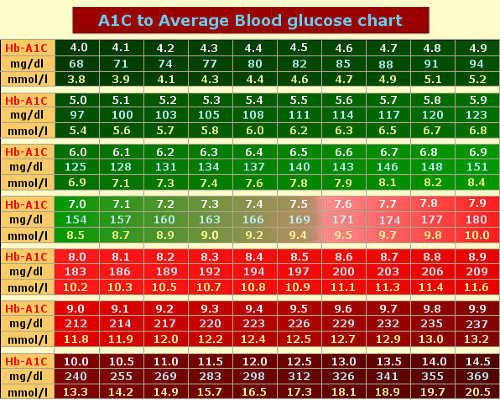 The study included 72 patients with type 2 diabetes lasting from 1 to 12 years. The intermittent fasting regimen used involved repeating 6 cycles of 5 days of severe calorie reduction followed by 10 days of normal eating (in total, the course took 3 months). The primary endpoint of this study is the achievement of remission of diabetes mellitus (glycated hemoglobin <6.5% without hypoglycemic therapy). Remission of diabetes mellitus was registered in 47.2% of patients in the intermittent fasting group and in 2.8% of patients in the control group. The decrease in body weight was, on average, 5.93 kg vs. 0.27 kg. The remission of diabetes mellitus was quite stable, remaining after 12 months in 44.4% of patients in the main group, the average level of HbA1c was 6.33%. It should be noted that in 65% of patients, the duration of DM at the time of inclusion in the study was at least 6 years, i.e. remission can be achieved not only in patients with a recent onset of the disease 4 .
The study included 72 patients with type 2 diabetes lasting from 1 to 12 years. The intermittent fasting regimen used involved repeating 6 cycles of 5 days of severe calorie reduction followed by 10 days of normal eating (in total, the course took 3 months). The primary endpoint of this study is the achievement of remission of diabetes mellitus (glycated hemoglobin <6.5% without hypoglycemic therapy). Remission of diabetes mellitus was registered in 47.2% of patients in the intermittent fasting group and in 2.8% of patients in the control group. The decrease in body weight was, on average, 5.93 kg vs. 0.27 kg. The remission of diabetes mellitus was quite stable, remaining after 12 months in 44.4% of patients in the main group, the average level of HbA1c was 6.33%. It should be noted that in 65% of patients, the duration of DM at the time of inclusion in the study was at least 6 years, i.e. remission can be achieved not only in patients with a recent onset of the disease 4 .
The 5:2 intermittent fasting regimen is also very effective for diabetes. The first long-term study on the effectiveness of this regimen was published in 2018 by the Journal of the American Medical Association (JAMA). The study involved 137 people with type 2 diabetes: Half of them adhered to the 5:2 scheme – they fasted two consecutive days a week, consuming 500 to 600 calories on fasting days. For the remaining five days they ate normally. The other half of the participants followed a reduced-calorie diet daily, consuming between 1,200 and 1,500 calories per day. The study found that those who followed the 5:2 diet were just as likely to control their blood sugar levels as those who followed the daily low-calorie diet. The researchers said the 5:2 diet “may be better than permanent calorie restriction for weight loss.”
Another study compared the effectiveness of different daily fasting regimens with an 8- and 12-hour eating window. The study found that the eight-hour group had significantly lower insulin levels than the 12-hour group.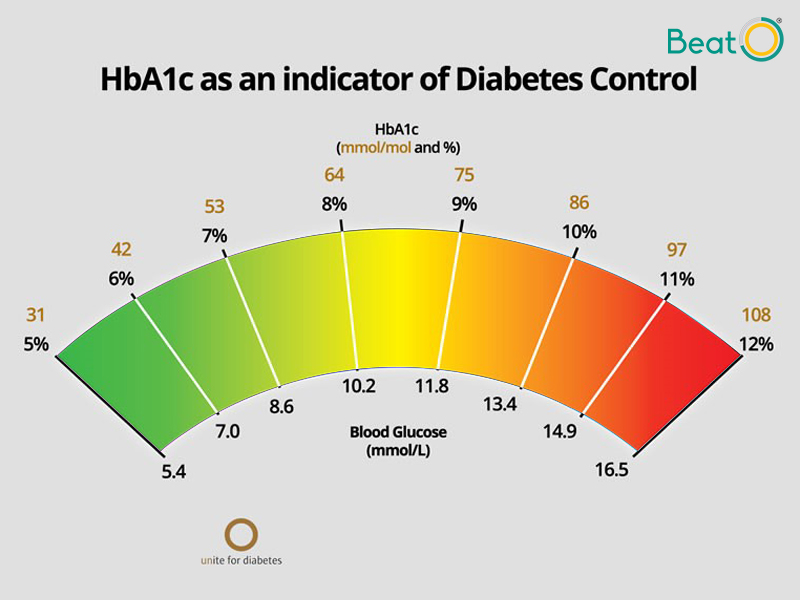 Both groups maintained their weight, but both insulin levels and blood pressure decreased
Both groups maintained their weight, but both insulin levels and blood pressure decreased
All this is good, but…
. First of all, you should not start practicing intermittent fasting on your own – be sure to first consult with your doctor. Also, consider the recommendations of the British Diabetes Association:
- Do not overeat during non-fast periods.
- Just before starting intermittent fasting, eat foods that are absorbed more slowly (i.e. foods with a lower glycemic index). They are often high in fiber and digest slowly.
- Be sure to eat foods that fill you up and keep your blood sugar stable during your fast. Examples are fruits, vegetables and fresh salads.
- When you break intermittent fasting, limit the amount of fatty or sugary foods in your diet. Try grilling or baking instead of frying.
- Drink plenty of fluids during fasting to avoid dehydration. Avoid sugary drinks.
- Check your blood glucose frequently.

- If you have symptoms of hypoglycemia, stop fasting immediately. At the same time, use the action plan that your doctor has prescribed for you in these cases – for example, take glucose tablets followed by a snack. Talk to your healthcare provider before resuming your fast 5 .
And of course, we should not forget that even while practicing intermittent fasting, you should not give up drug treatment of diabetes (perhaps the attending physician will adjust the dose of antidiabetic drugs), regular physical activity and the principles of rational nutrition. It is necessary to follow a balanced diet both during periods of fasting and during breaks. Botanica will help you with this.
Botanica Frozen Ready Meals – low carbohydrate ready meals with calculated glycemic index and load. Does not contain sugar and starch.
Our meals are not medicines, panaceas and are not considered medicinal or dietary. They are only meant to help you calculate your glycemic load to control your blood sugar.

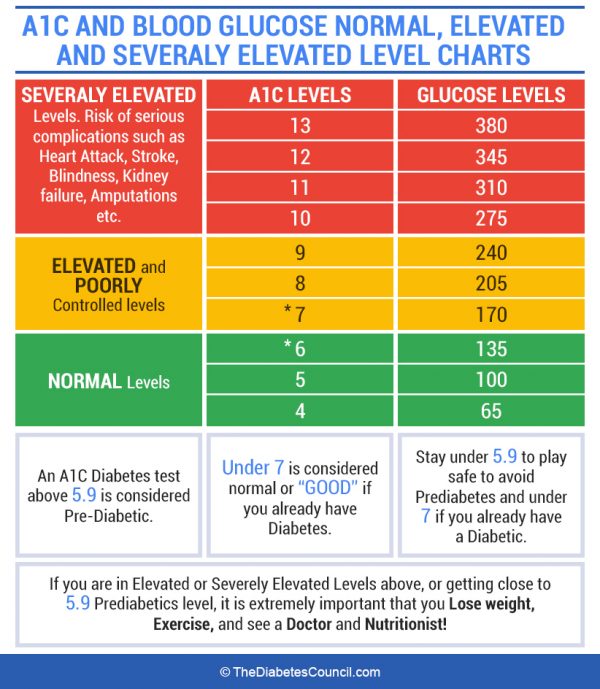

 ru/jour/article/viewFile/3839/2865
ru/jour/article/viewFile/3839/2865